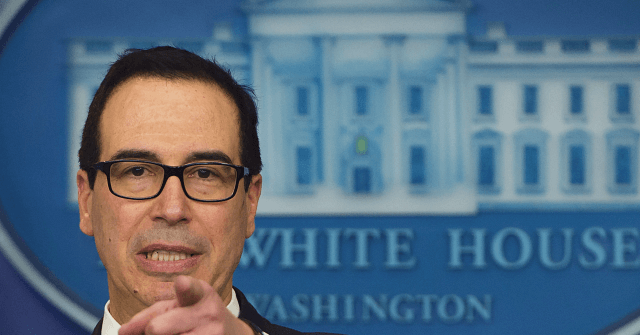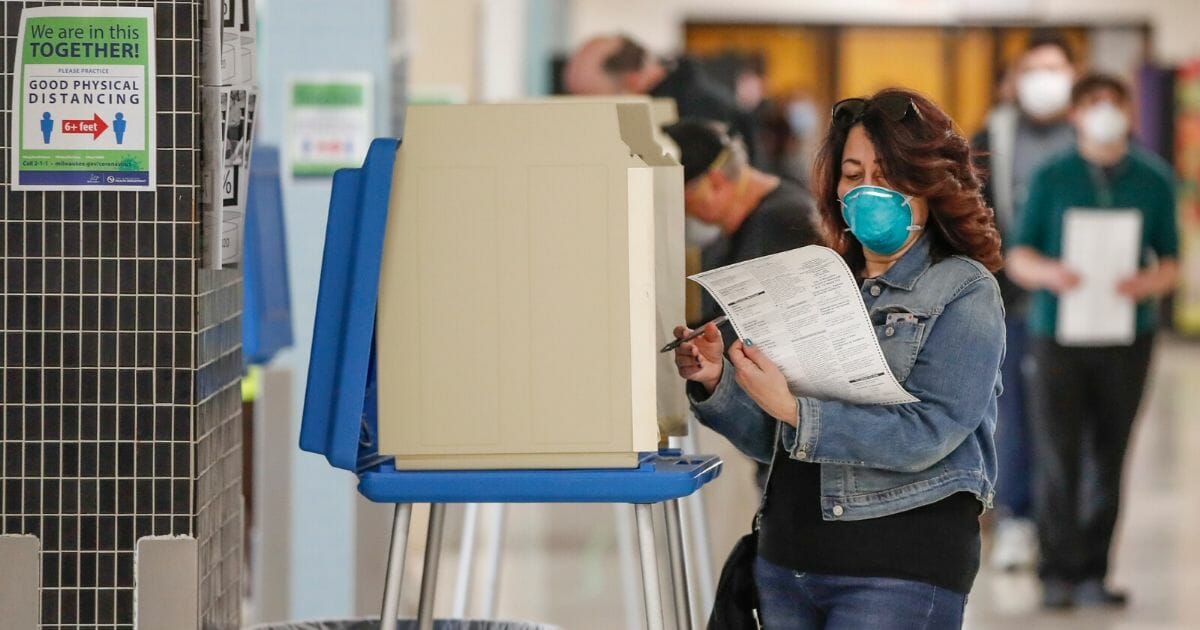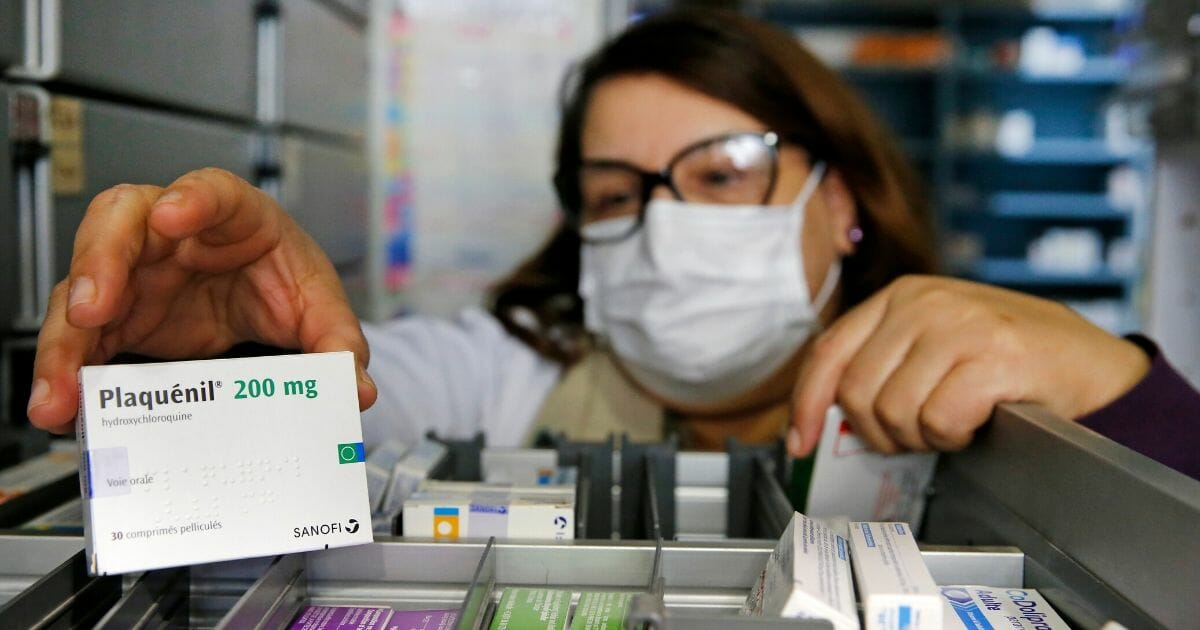
Monday for his Fox News Channel’s show monologue, Tucker Carlson questioned the efficacy of the U.S. response to the coronavirus pandemic, which has come at such a high cost for the American economy.
Carlson pointed to several measures, including some extreme, that are being floated by policymakers.
According to Carlson, it is unclear whether or not those will work in combatting the spread of COVID-19.
CARLSON: So if you’ve been sick, you know that Intensive Care is not something that doctors recommend lightly. Boris Johnson is clearly in danger tonight. And that’s a bad sign. Johnson is in his mid-50s and hail enough to lead a country.
If this can happen to him, a lot of us should be worried and we are worried — worried enough to endure things that just a month ago would have seemed preposterous.
Last week, Dr. Michael Ryan, he is a leader at the World Health Organization announced that in response to the spread of this virus, authorities may have to enter people’s homes and remove family members, presumably by force.
(BEGIN VIDEO CLIP)
DR. MICHAEL RYAN, EXECUTIVE DIRECTOR, W.H.O. HEALTH EMERGENCIES PROGRAMME: In most parts of the world, due to lockdown, most of the transmission that’s actually happening in many countries now is happening in the household at family level.
In some senses, transmission has been taken off the streets and pushed back into family units.
Now, we need to go and look in families to find those people who may be sick and remove them and isolate them in a safe and dignified manner.
(END VIDEO CLIP)
CARLSON: Just so you know, we’re coming to your house, seizing your children and “isolating” them in a safe and dignified manner, whatever that means.
Now, that’s not something under normal circumstances, officials casually drop during briefings, it is the kind of statement that might trigger violence. People don’t respond well when you threaten to take their kids.
But Ryan said it like it was no big deal, and that’s how the media treated it. His threat didn’t make headlines in any of the major newspapers in this country. That’s the kind of moment we’re in.
So how long will this moment last? Well, on Friday, Eric Garcetti, the Mayor of Los Angeles, predicted that the first in a series of lockdowns will go on until June.
(BEGIN VIDEO CLIP)
ANDERSON COOPER, CNN ANCHOR: One of the things that just concerns me, it is not one of those immediate concerns, but, you know, this draws out through the summer and then then the cold weather comes around, and then there’s another wave of it. How do you as a leader, how do you think about this?
MAYOR ERIC GARCETTI (D), LOS ANGELES, CALIFORNIA: Early on, when people said, is this just going to be a few days or a couple of weeks? I said, no, I think it’s at least two months. And I said, if we’re successful in this, we can expect a second spike in the late fall or early winter. That’s how viruses work.
We better steal ourselves for a second and maybe even third round of this. But we also need to be nimble enough to know we’re not going to flip a switch one day in turn the economy back on.
(END VIDEO CLIP)
CARLSON: A quote, “second and maybe even third round” of lockdowns, that’s a long time.
Former Obama official, Jason Furman, who is now an economist at Harvard predicts the disruption may be even more severe than that, “We should certainly be prepared for a meaningful level of deliberate suspension of economic activity for the rest of the year.”
Well, it would be nice to know that there’s a good reason for all of this, and of course, everyone wants there to be a good reason, sincerely.
Yet the arguments for a prolonged national lockdown are starting to sound strained. In a much discussed article on “Medium” recently, two academics from Pittsburgh argued that lifting the lockdown at all even many months from now, would be negligent, “As long as a large majority of the population remains uninfected, lifting containment measures will lead to an epidemic almost as large as what happened without having mitigations in place at all.”
Well, that sounds plausible when you read it. In fact, it sounds like science, but is it science? A large majority of the population remains uninfected they say, but is that true? We don’t know if it is true.
As of today, nobody can say what percentage of the American population is infected or has been infected. There haven’t been large scale randomized tests conducted here.
We don’t even know when the disease first arrived in the United States. There’s informed speculation that this strain of coronavirus has been here since late November or December.
Authorities traced the first confirmed case to January 15th in Washington State, an unnamed 35-year-old Chinese immigrant who landed in the United States after visiting his family in Wuhan and wound up in a hospital outside Seattle. Apparently, he recovered.
Now, depending on how you count, the virus has been circulating among us for up to four months now. For most of that time, there was no systematic attempt to quarantine the population.
How many Americans were infected over that period? Again, we don’t even have a ballpark number for that. But the number could be enormous because the virus turns out to be much easier to transmit than we thought it was.
On Friday, you may have noticed, the C.D.C. issued new guidance on mask use. The government now recommends wearing “cloth face coverings” in public. Why did they make that change? Because researchers are learning more about how this virus moves from person to person.
Scientists now believe the coronavirus can be transmitted by someone who shows no symptoms merely by speaking. Remember when they told you that hand washing was the key to staying safe? That recommendation was based on the belief that virus lived mostly on surfaces. And that’s not the case.
We’re still not exactly sure how the virus is spread, but among some populations, and this is interesting to know, it appears to be astonishingly widespread.
An article in the Italian media last Thursday, for example, described a blood drive in a village in Lombardy. That’s the northern part, the most infected part of the country.
Of the 60 people who showed up to give blood, 40 tested positive for coronavirus. None had shown symptoms of it. None knew they had it.
Keep in mind that Lombardy has been strictly locked down by government orders since March 9th. That’s almost a month ago. Yet about seven percent of this group got it anyway.
A report from Hong Kong in February suggested that a woman diagnosed with the coronavirus may have infected others 10 floors away in the same apartment building, even though she never came into contact with any of them.
Health officials concluded the virus likely traveled through plumbing pipes to different apartments. And it wasn’t a wild guess, in 2003, an outbreak of SARS spread the same way.
So it’s starting to look like the coronavirus is more transmissible than we expected or we’re told. The good news is it also seems far less lethal overall, people are still dying in large numbers. Not all of them are sick or old and that’s terrifying to watch.
But as the data trickle in, there’s evidence that many infected people are not sick. Iceland has tested a larger percentage of its population than any country in the world. They’ve tested about five percent of all citizens. The United States by comparison is tested 0.3 percent.
So far, about half those who’ve tested positive in Iceland have been completely asymptomatic. So given all of this what is a wise response to this pandemic?
Historically, health officials have used quarantines to contain infectious diseases. Until now, a quarantine consisted of separating the sick from the general population, and then doing everything possible to protect the especially vulnerable. In this case, that would include the elderly and immunosuppressed among other groups.
We have a pretty good idea that targeted quarantines work. They’ve been used for centuries around the world. But that’s not what we did. Instead, the United States and many other countries instituted mass quarantines in which governments shut down entire nations for long periods. That’s never happened before.
Now, mass quarantine makes sense if you’re fairly certain it will prevent mass infection. But are we certain of that? Well, despite what you might hear on television, we are not certain of that, still. In fact, there’s some indications it hasn’t been as effective as we’d hoped it would be.
Italy imposed one of the toughest lockdowns in Europe, almost a month later, as we just told you, an overwhelming majority of at least one town has been infected with the virus anyway.
Now, it’s possible to imagine that a mass quarantine might stop transmission of a virus, it might work if it actually separated people. If citizens were forced to stay in their homes and not have any interaction with other people. But we’re not doing that in the United States. We never will do that here.
Too many Americans live alone for one thing. People would starve to death. Instead, the directive we’re living under is this, stay home, except to buy food. The one place you can go is the supermarket, where by the way everyone else in your neighborhood has been this week.
From an epidemiological standpoint, this is lunacy. If you wanted to infect an entire population, you’d encourage everyone in a specific zip code to meet regularly in one enclosed location. It doesn’t make sense.
Authorities must know it doesn’t make sense. That’s obvious. But instead of changing course, or fine tuning, they’re doubling down hoping that vehemence will compensate for bad science.
Here’s the Mayor of Los Angeles just last week.
(BEGIN VIDEO CLIP)
GARCETTI: If you’ve observed recurring violations of the safer at home order, please continue to let us know at coronavirus.lacity.org/businessviolation.
You know the old expression about snitches, well, in this case, snitches get rewards. We want to thank you for turning folks in and making sure we are all safe.
(END VIDEO CLIP)
CARLSON: So you just saw the mayor of our second biggest city offering to pay citizens to snitch on their neighbors, for, among other things, daring to go to work.
Working is one activity we’ve decided should not be allowed. Jogging, fishing, golf, fine. Being employed — a massive threat to public health.
We’ve decided that offices are somehow more dangerous than supermarkets — far more dangerous, so no one has today bothered to explain how. The result of this, by some estimates, more than 17 million Americans are unemployed right now. That’s the highest number in the history of this country.
A year from now — and we should think about this, how will all of us feel about the decisions we’ve made in the face of this pandemic? Is there a single person who sincerely expects the coronavirus itself will hurt more people in the end than the damage we’re causing in our response to it? Probably not.
Mass unemployment is almost certain to cause far more harm, including physical harm to the average family than this disease.
In 1967, two psychiatric researchers decided to rank traumatic life events in order of how profoundly they affected people’s health. Stress can kill you, we know that and they wanted to determine which kinds of stress were the most dangerous.
The doctors found that losing a job ranked high on the list of health degrading traumas. Joblessness came in well above death of a close friend to put it in some perspective.
If you ever found yourself unemployed with dependents to take care of, you understand this. Unfortunately, many of our policymakers don’t understand. They’ve never been in that position. They never will be.
Our professional class doesn’t have much interest in middle class job loss or its consequences, we know that because they’ve essentially ignored it for decades, not to mention the family disintegration and the drug epidemic it has spawned.
So far, about 10,000 Americans have died from the Wuhan coronavirus. That number will rise and it will likely include people you know, that’s a tragedy. But it’s not the only tragedy in progress in this country.
In 2018, more than 67,000 Americans died of drug overdoses. The year before, more than 70,000 died. That’s more than the entire population of the towns most of us grew up in. And those totals are far lower than the real number according to people who study the question.
The drug epidemic has permanently changed the demographics of this country, but for some reason, CNN has not kept a running tally of drug casualties on the screen. Why is that? Well, you know why? It’s not their peer group. It doesn’t seem real. They’re not that interested. And the same thing is going on now.
If the coronavirus shutdown was crushing college administrators or nonprofit executives or green energy lobbyists, it would have ended last week. Instead, it’s mainly service workers and small business owners who have been hurt and they’re not on television talking about what they’re going through. You need to look closely to see their suffering.
Over the weekend the head of Indiana’s family and Social Services Administration announced the calls to the state’s mental health and suicide prevention hotline had gone from about 1,000 to 25,000 a day.
Calls to Indiana’s addiction hotlines have risen dramatically as well. Reports of domestic violence have spiked in this country and in fact, around the world. In France, they rose 32 percent in a single week.
Someday, we will get the numbers on the child abuse going on during this lockdown, and we’ll all feel sick to our stomachs.
Once again coronavirus is not the only bad thing that’s happening in America right now, horrifying as it is. We should never minimize the danger of this pandemic or minimize our obligation to respond to it wisely. We’ve been saying that on the show for months.
No thoughtful person wants to reopen baseball stadiums tomorrow or book a cruise to Shanghai. But there has to be a more balanced course than the one we’re on now.
For most people, going to work cannot be more dangerous than buying produce at Safeway twice a week. And if it is more dangerous, tell it — tell us how it is more dangerous and be specific when you describe that. Otherwise, it’s time to start caring about the entire population. Healthy people are suffering badly, too.
via Breitbart News
Enjoy this article? Read the full version at the authors website: https://www.breitbart.com








